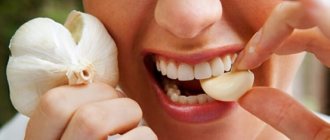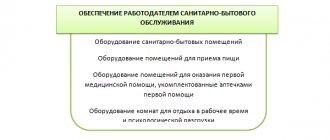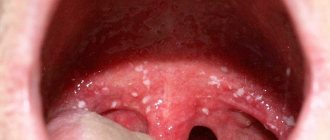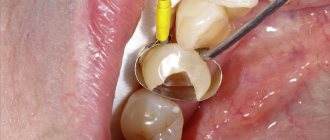Clinical manifestations of lymph node diseases
Inflammation of the lymph nodes is manifested by such signs as: enlargement of the lymph node in size (up to 1–2 cm or more), pain, changes in the skin over the lymph node in the form of redness, swelling, local hyperthermia. In case of inflammation of the cervical lymph nodes, pain when swallowing is often associated.
It should be noted that not every increase in size of lymph nodes is a sign of lymphadenitis (inflammation). There is an extensive group of pathologies of the lymph nodes - generalized and local lymphadenopathy, which is accompanied by an enlargement of one or more groups of lymph nodes.
With generalized lymphadenopathy, several groups of lymph nodes (for example, cervical, subclavian, inguinal) become enlarged. Generalized lymphadenopathy can have an infectious or tumor cause. In infections such as HIV, syphilis, infectious mononucleosis, generalized cytomegalovirus infection, toxoplasmosis, tuberculosis, enlargement of several groups of lymph nodes occurs. With tumor generalized lymphadenopathy, various lymphoproliferative diseases are diagnosed: lymphogranulomatosis, various lymphomas and multiple metastases of malignant tumors. Most lymphoproliferative diseases are accompanied by chills, night sweats, weight loss, general weakness, and enlarged lymph nodes up to 3–4 cm in diameter.
Local lymphadenopathy can also be the result of an infection in the lymphoid tissue (for example, in cat scratch disease - bartonellosis, in primary syphilis) and have a tumor origin (for example, metastasis to the left supraclavicular lymph node in stomach cancer). Thus, most cases of enlarged lymph nodes are a consequence of general or local infectious processes, and they are also of a tumor nature.
In rare cases, enlarged lymph nodes may be caused by taking medications such as allopurinol, atenolol and captopril, biseptol, carbamazepine and others. With some autoimmune processes in the body (rheumatoid arthritis, systemic lupus erythematosus), lymphadenopathy (LAP) is also possible.
Frequently asked questions about lymphadenitis
What is submandibular lymphadenitis?
This is an inflammation of the lymph nodes that are located under the lower jaw. This form of the disease develops in the presence of an infectious focus in the oral cavity. This could be caries, periodontitis, gum disease, tonsillitis. It is accompanied by symptoms such as pain at the location of the node and redness of the skin above it, increased body temperature, pain during eating and during conversation, general malaise, and headache.
How long does it take to treat lymphadenitis?
The duration of treatment for the disease depends on a number of factors: the form of the disease; the presence of a purulent process; causative agent of lymph node inflammation. To completely eliminate the inflammatory process and eliminate pathogenic microbes in uncomplicated lymphadenitis, the course of treatment will be about two weeks. In the chronic form of the disease, therapy is long-term.
Is it possible to warm a lymph node?
Thermal effects on the inflamed lymph node are allowed when the inflammatory process has not yet been complicated by the formation of pus. It is believed that warming compresses with camphor oil or infusion of medicinal herbs help relieve pain and inflammation. However, you should consult your doctor before undertaking warming procedures, as such actions may worsen the infection. If the skin over the inflamed lymph node is red, then warming it is contraindicated, as this is a sign of suppuration.
The difference between lymphadenitis and lymphadenopathy
The main difference between lymphadenitis and lymphadenopathy is that with LAP one or several groups of lymph nodes enlarge, and with lymphadenitis an inflammatory reaction occurs in the tissue of the node itself, which is accompanied not only by its enlargement, but also by pain, a change in the condition of the skin above it in the form of redness , compaction, increased local and sometimes general temperature. In severe cases, purulent inflammation may transfer to the surrounding tissue with the formation of phlegmon, the presence of which requires urgent surgical intervention.
The use of antibiotics for lymphadenitis is effective in the presence of bacterial infections. The causative agents of such infections are streptococci, staphylococci, Escherichia coli, Proteus, Pseudomonas aeruginosa, pneumococci, fusobacteria, Klebsiella, enterococci, chlamydia and others, as well as microbial associations of various bacteria.
In some cases, viral inflammation initially occurs (caused, for example, by herpes viruses or adenoviruses) with the secondary addition of microbial flora. In these cases, the use of antibiotics will also be effective.
Causes of lymphadenitis
The function of the lymph nodes is to prevent the spread of infectious processes in the body. Any infectious agent that gets into them is destroyed by lymphocytes. When too many foreign microorganisms arrive, lymphocytes cannot cope with so many bacteria, the latter begin to actively multiply. This creates conditions for other types of leukocytes to penetrate into the site of inflammation, which causes an enlargement of the lymph nodes. One or more of them may become inflamed.
Inflammation can be nonspecific and specific. In the first case, the causes of the disease are bacteria and their toxins, viruses, and fungi. Lymphadenitis of the lymph nodes is caused by staphylococci and streptococci; they are pyogenic flora. The primary source of infection in the nonspecific form of the disease are boils, festering wounds, trophic ulcers, caries, erysipelas, and thrombophlebitis. In children, inflammation of the lymph nodes is often a complication of inflammatory processes in the ENT organs (tonsillitis, tonsillitis, otitis media, influenza), childhood infections (scarlet fever, mumps, diphtheria) and skin diseases (diathesis, pyoderma).
A specific type of disease is triggered by certain types of microorganisms:
- tuberculous mycobacterium;
- plague stick;
- Brucella (the causative agent of brucellosis);
- Treponema pallidum (the causative agent of syphilis);
- tularemia bacteria (causing tularemia);
- actinomycete (the causative agent of actinomycosis).
When infected with these types of microorganisms, special symptoms characteristic of a particular disease develop. Lymph nodes undergo specific changes, since infectious agents enter them with the flow of lymph.
In what cases do the lymph nodes in the neck become inflamed?
In the area of the subcutaneous tissue of the neck, there are several groups of lymph nodes: mental, submandibular, mandibular, superficial and deep cervical (located on the lateral surfaces of the neck), facial buccal, parotid, occipital, mastoid (behind the ear), supraclavicular. They carry out the outflow of lymph from areas such as:
- skin and subcutaneous tissue of the face, scalp and neck;
- organs of the oral cavity - teeth, tongue, mucous membranes of the lips and mouth;
- mucous membrane of the nose and its paranasal sinuses;
- tonsils, palatine arches, uvula, pharynx, larynx;
- outer, middle and inner ear;
- conjunctiva and skin of the eyes.
Therefore, the cause of inflammation of the lymph nodes in the neck may be:
- pustular diseases of the skin of the face, scalp and neck;
- deep caries and pulpitis, gumboil (lead to odontogenic lymphadenitis);
- some stomatitis;
- sinusitis – sinusitis, ethmoiditis, frontal sinusitis, sphenoiditis;
- pharyngitis, tonsillitis, laryngitis, otitis.
What diagnostics are needed for enlarged lymph nodes in the neck?
As with any emerging pathology, a clinical examination of the patient by a doctor is important. To make a correct diagnosis, the doctor details the complaints according to the duration of the pathology, the presence of pain in the lymph nodes and fever, pain when swallowing, clarifies information about previous colds, whether there has been a decrease in body weight, contact with cats. The specialist also finds out the presence of concomitant diseases, what medications the patient is taking, finds out his occupation, and the fact of traveling to countries where certain infections are endemic.
During a physical examination, the oropharynx is examined for the presence of inflammation in the pharynx and tonsils, rashes on the skin and visible mucous membranes, the condition of the teeth and gums is assessed, all groups of lymph nodes are palpated to determine the size, degree of compaction, pain, adhesion to surrounding tissues, the presence of changed skin over the nodes and in areas of lymphatic drainage. Using percussion and auscultation methods, the state of the respiratory organs and cardiovascular system is examined, and the abdomen and spleen are palpated.
Of the laboratory diagnostic methods, a clinical blood test is important. With purulent lymphadenitis, an increase in the level of leukocytes with an increase in the number of certain neutrophils and lymphocytes is characteristic. With a disease such as infectious mononucleosis, the leading symptom of which is enlarged lymph nodes in the neck and sore throat, atypical mononuclear cells are detected in a blood test.
For an in-depth diagnostic search in order to determine the cause of inflammation of the lymph nodes, the patient may be prescribed blood tests for various infections (toxoplasmosis, HIV, syphilis, viral hepatitis and many others). To determine the source of inflammation in the oropharynx, consultations with an otolaryngologist and a dentist are often sought.
What should be differentiated from cervical lymphadenitis?
Sialadenitis (inflammation of the salivary gland), middle and lateral neck cysts, and lipomas (benign tumors of adipose tissue) can most often be mistaken for neck lymphadenitis.
To differentiate lymphadenitis from tumor lymphadenopathy and other diseases, in some cases the patient may be offered an ultrasound of the lymph nodes, a biopsy, an MRI or a CT scan.
Not in all cases, the root cause of cervical lymphadenitis is easy and simple to determine, therefore, when the lymph nodes in the neck are inflamed, antibiotics are prescribed.
Symptoms of lymphadenitis
Based on the nature of the inflammatory process, the following forms of the disease are distinguished:
- Acute lymphadenitis. The duration of the course is up to two weeks. Characteristic symptoms: pain and enlargement of regional lymph nodes, fever, headache, general weakness, loss of appetite, swelling and redness of the skin in the area of the affected node.
- Chronic lymphadenitis. The duration of the disease is 1 month or more. Develops with a sluggish infection or after untreated acute lymphadenitis. With this course, the pain syndrome is erased, but the lymph nodes themselves remain enlarged and dense. Lymphatic fluid retention and swelling are noted.
Lymphadenitis is classified according to the location of the inflamed lymph nodes into the submandibular, cervical, axillary and inguinal. All of them are characterized by similar symptoms: enlarged lymph nodes, pain, redness of the skin, intoxication syndrome. The differences are due to the location of the inflammatory focus.
Thus, with cervical lymphadenitis, there is a restriction in head movement; when turning or bending, the patient feels acute severe pain. If the lump is large, it can put pressure on the organs of the neck and cause difficulty breathing, changes in voice, and difficulty swallowing food.
Submandibular lymphadenitis is accompanied by pain in the jaw during talking or eating, but is rarely bothersome at rest. With the axillary type of the disease, hand movement is impaired, swelling of the upper limb on the affected side increases and its sensitivity is impaired.
Inguinal lymphadenitis is characterized by swelling of the legs on the affected side. This manifestation is due to a violation of the outflow of lymph and compression of large vessels in the groin area. If suppuration occurs, the body temperature can rise to 40 degrees, the patient feels weakness and pain in the lower abdomen.
What antibiotics treat inflammation of the lymph nodes in the neck?
Antibiotics for inflammation of the lymph nodes are represented by the following groups:
Penicillins
Penicillins are bactericidal antibiotics that contain a beta-lactam ring in their chemical structure. The bactericidal effect consists of the irreversible death of microbes by destroying their cell wall. These include natural and semi-synthetic penicillins, as well as combined
- Short- and long-acting penicillin (bicillins), phenoxymethylpenicillin (rarely taken in the treatment of lymphadenitis at the present stage).
- Amoxicillin in capsules, tablets and suspensions for children in doses of 125 mg, 250 and 500 mg. Adults should take it 500 mg 3 times a day or 1000 mg 2 times a day. Amoxicillin is prescribed to children individually depending on the severity of the infection, age and body weight.
- Amoxicillin with clavulanic acid (“Flemoxin”, “Augmentin”, “Amoxiclav”, “Panklav”, “Betaklav”). The presence of clavulanic acid in this complex increases the resistance of the antibiotic amoxicillin to destruction by penicillinases, enzymes of some bacteria. Single doses of these antibiotics are equivalent to 125, 250, 500 and 1000 mg of amoxicillin. Adults in most cases take the drug 625 mg 3 times a day at regular intervals or 875 mg 2 times a day after 12 hours. The duration of treatment is 5–10 days. For children, single and daily doses are determined individually depending on age and body weight; for children, it is preferable to prescribe suspensions or syrup of this drug. Taking into account the pharmacodynamics of this antibiotic, the frequency of taking amoxicillin is 2-3 times a day.
- Ampicillin. Available in tablets, oral suspensions and vials for injection. A single dose for children is 125–250 mg; for children up to 20 kg it is calculated individually (12.5–25 mg per 1 kg of body weight). For adults, a single dose of ampicillin is 500–750 mg. The frequency of antibiotic administration is 4 times a day.
- Oxacillin and ampiox (a combination of oxacillin and ampicillin).
The general properties of all penicillins are low toxicity, possible use in children and pregnant women. The use of antibiotics in this group is limited by a history of intolerance or a positive intradermal test when determining sensitivity to injectable penicillins.
If infectious mononucleosis, a viral infection caused by the Epstein-Barr virus, is suspected, the use of amoxicillin and ampicillin should be avoided, as a widespread skin rash may occur.
Macrolides
Macrolides are antibiotics of natural and semi-synthetic origin that contain a lactone ring in their structure. This group of antibiotics has a bacteriostatic effect: they inhibit the proliferation of pathogenic bacteria by inhibiting protein synthesis in microbial cells. In high concentrations, macrolides have a bactericidal effect.
This group of antibiotics affects respiratory tract infections and complications caused by gram-positive flora and atypical bacteria that multiply inside the cells of the respiratory tract (chlamydia, legionella, mycoplasma).
The use of some macrolides is possible in children and pregnant women, since macrolides are less toxic compared to other groups of antibacterial drugs.
The disadvantage of using some macrolides is low acid resistance and reduced antibacterial activity due to the destructive effects of gastric juice. For this reason, most macrolides are recommended to be taken 1 hour before meals or 2 hours after, with plenty of water. Macrolides include the following drugs:
- Erythromycin in tablets of 250 and 500 mg. The daily dose of this drug is 1.0–2.0 g, the frequency of administration is 4 times a day. The use of erythromycin is possible in children and pregnant women.
- Clarithromycin. Available in doses of 250 and 500 mg in tablets and in suspension for children in a dose of 125 mg/5 ml (the drug "Klacid"). The dosage regimen is individual. A single dose for adults is 250 mg or 500 mg; for children it is calculated depending on body weight and age, and the severity of the infection. The frequency of administration is 2 times, the duration of therapy is determined individually and is 7–14 days. The use of clarithromycin in pregnant women in the first trimester is contraindicated; in the second and third trimesters, the advisability of use should be taken into account due to the presence of risks to the fetus. Clarithromycin causes increased skin sensitivity to sunlight, so tanning and sun exposure during treatment are contraindicated. Clarithromycin therapy requires excluding the combined use of drugs from the group of statins (lowering cholesterol levels), some antihistamines (astemizole, terfenadine). Clarithromycin should be prescribed with caution for liver and kidney diseases and cardiac arrhythmias.
- Azithromycin (“Azimed”, “Sumamed”, “Hemomycin”, “Fromilid”, “Azivok”, “Azitrox”). The range of azithromycin preparations is large: in tablets and capsules of 250 and 500 mg, as well as in suspensions for children. The drug has a wide spectrum of action, creates high concentrations in pathological tissues, and is easy to use: once a day is enough. The effect of azithromycin continues for 5-7 days after the end of administration, so it is usually taken for 3 to 5 days. The effect of azithromycin use depends on the timing of the meal and the antibiotic. Azithromycin should be taken one hour before or 2 hours after meals with water.
- Josamycin (“Vilprafen Solutab”) – 500 mg in tablets and suspension. The frequency of taking josamycin is 2 times a day; the antibacterial drug is not dangerous for pregnant women.
- Midecamycin (“Macropen” 400 mg) is an effective antibacterial drug for the treatment of lymphadenitis in children and adults, as it has a wide spectrum of action on gram-positive and gram-negative flora, as well as on intracellular pathogenic microorganisms. Available in tablets and suspensions. The dosage regimen for adults is 400 mg 3 times a day, for children – 30–50 mg per 1 kg of body weight per day in two doses.
- Roxithromycin (Rulid). It is possible to use Rulid in adults in a single dose of 150 mg 2 times a day. In children, the dosage of roxithromycin is 5–8 mg/kg per day in 2 divided doses for 7–10 days. Release forms: tablets for oral administration and suspension preparation.










